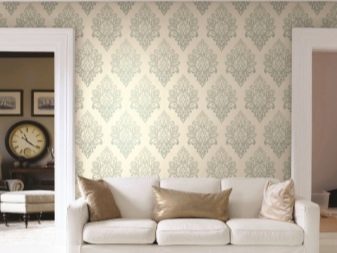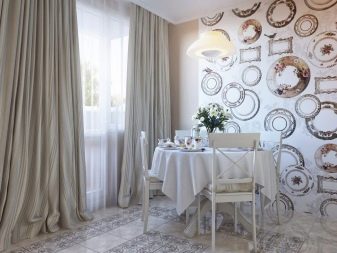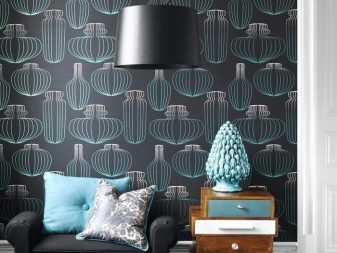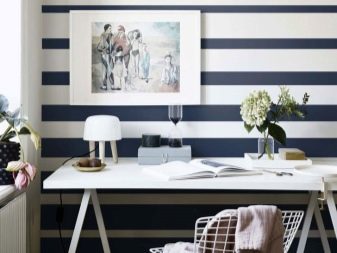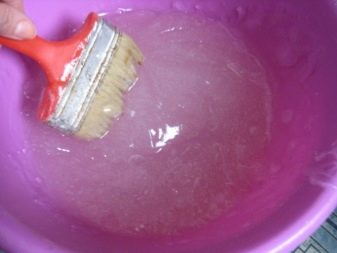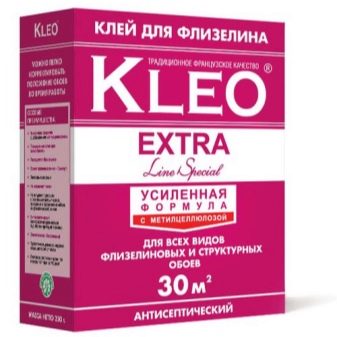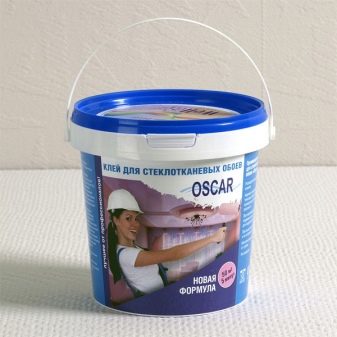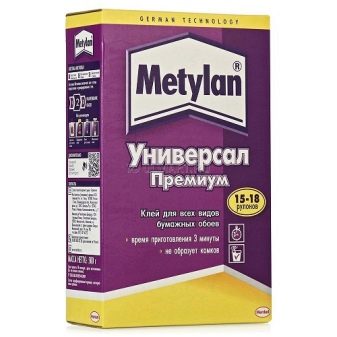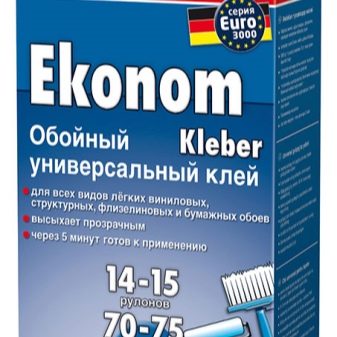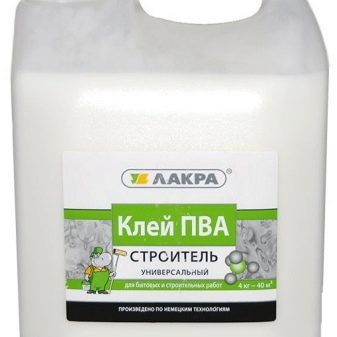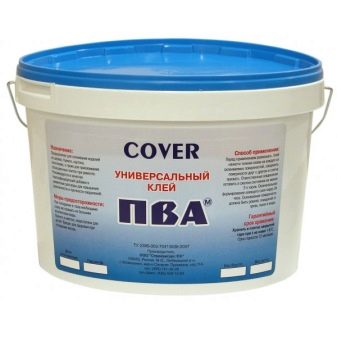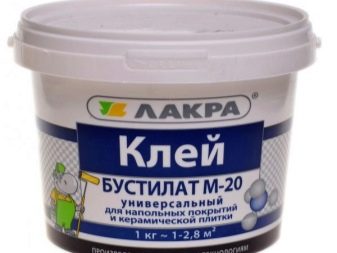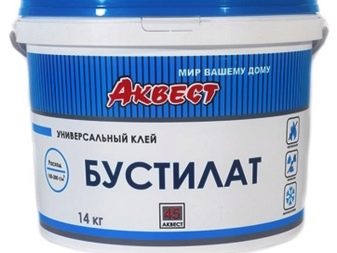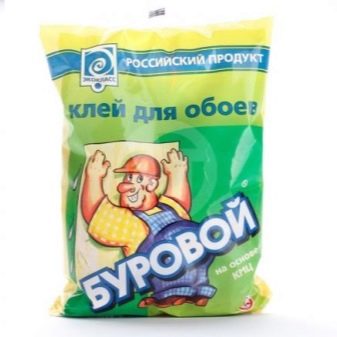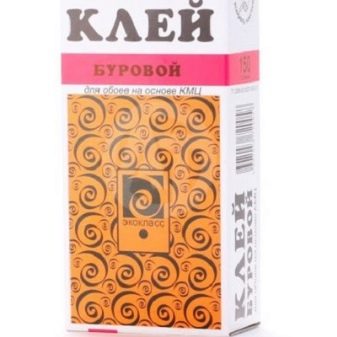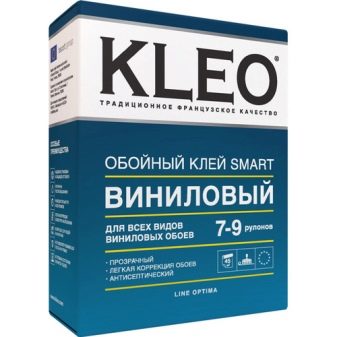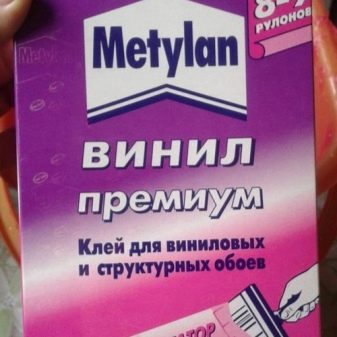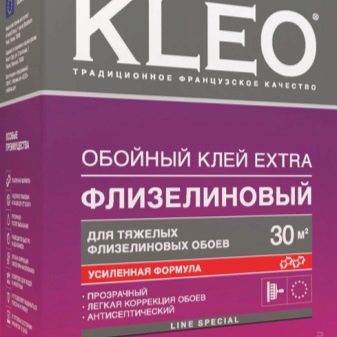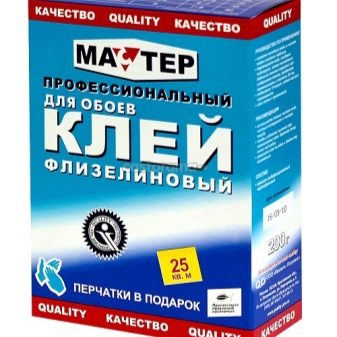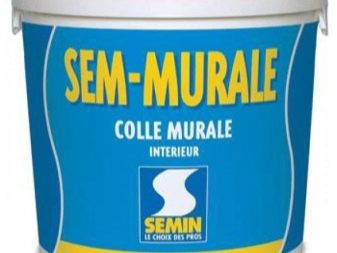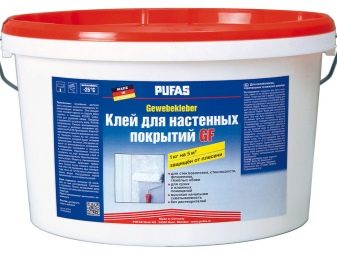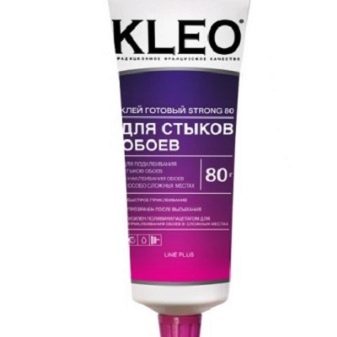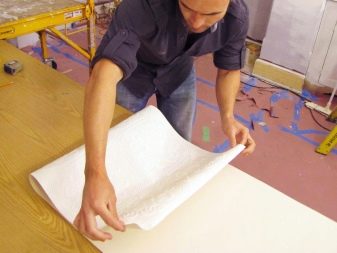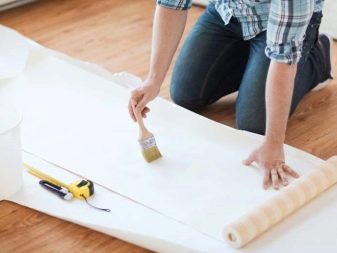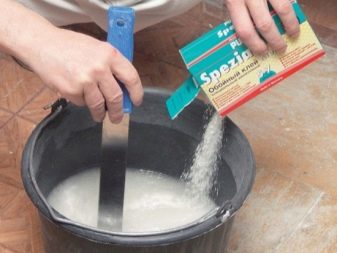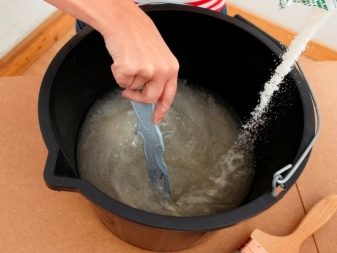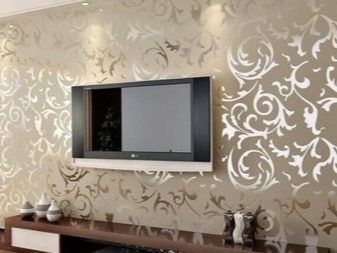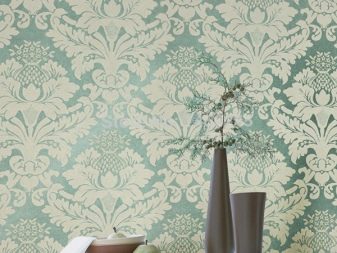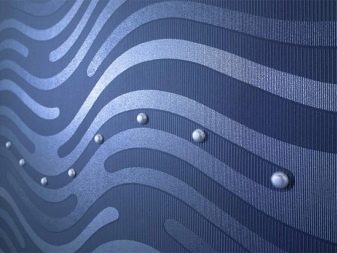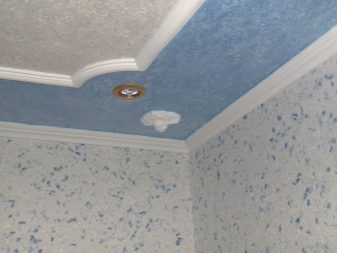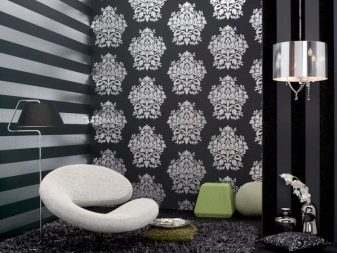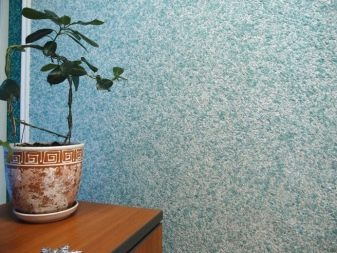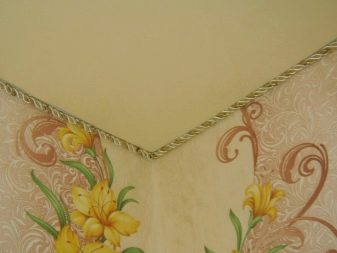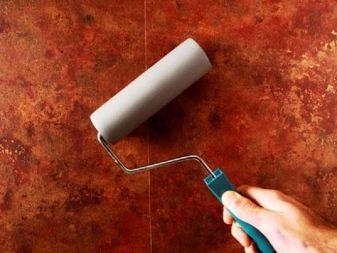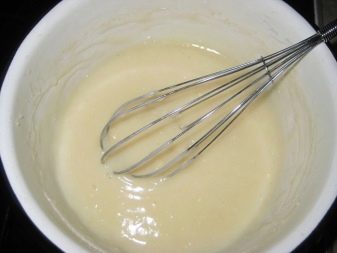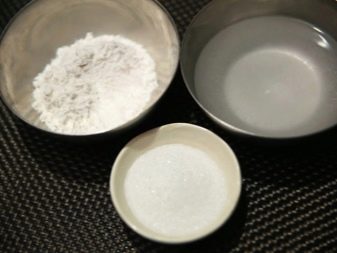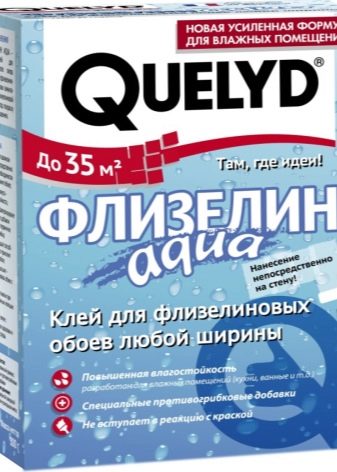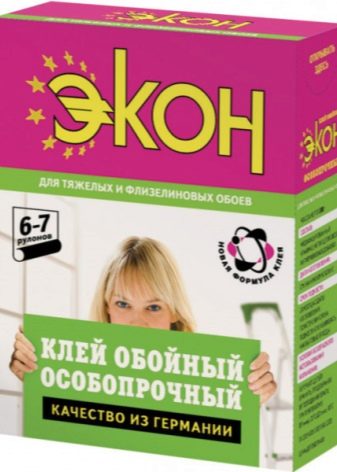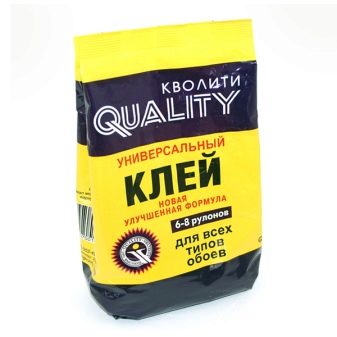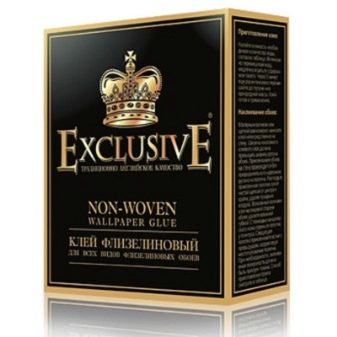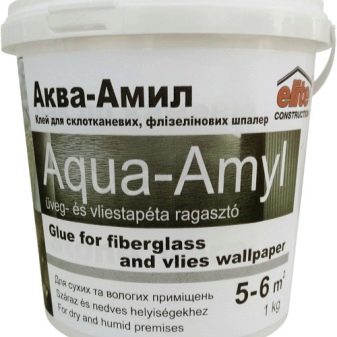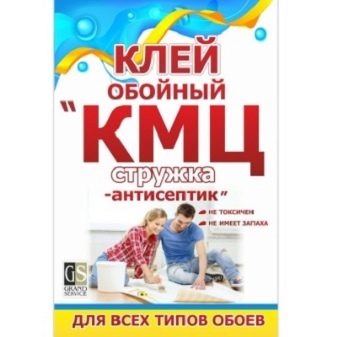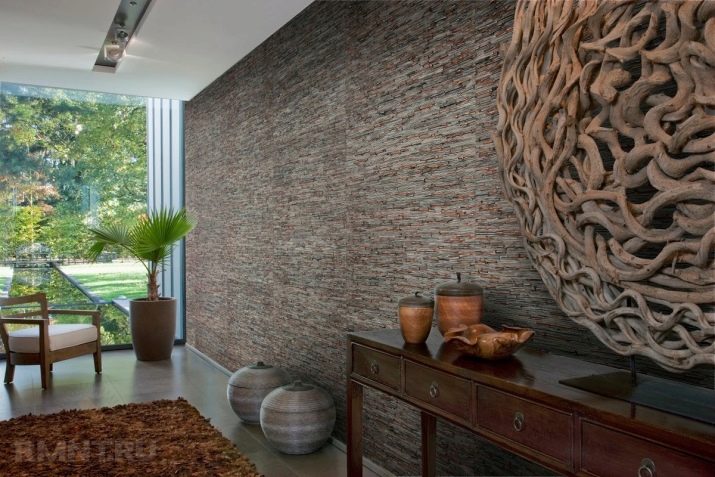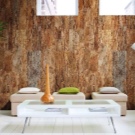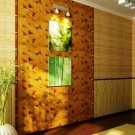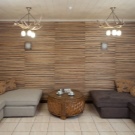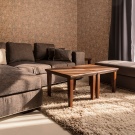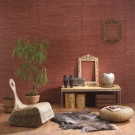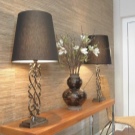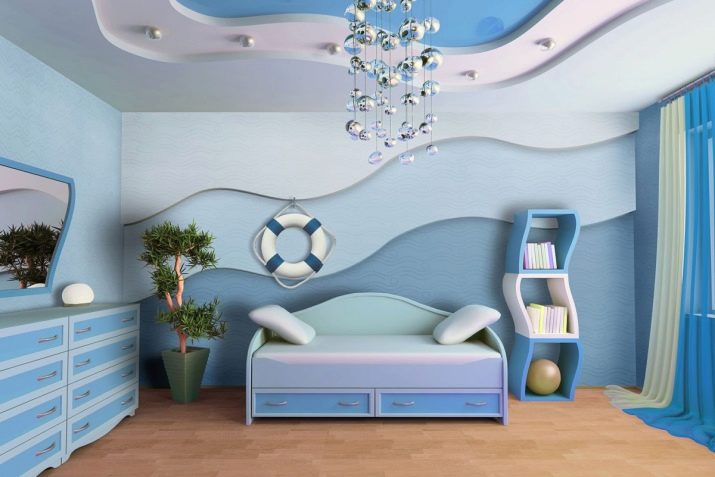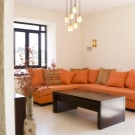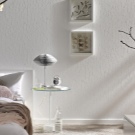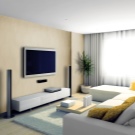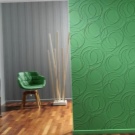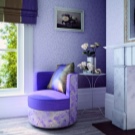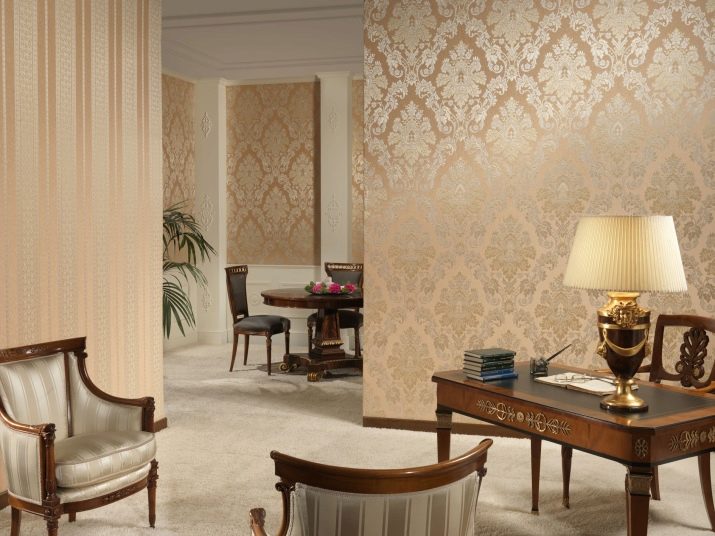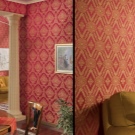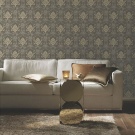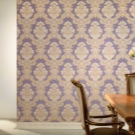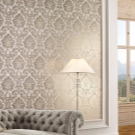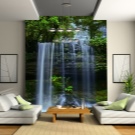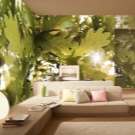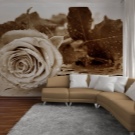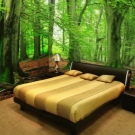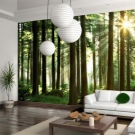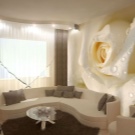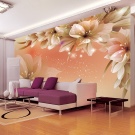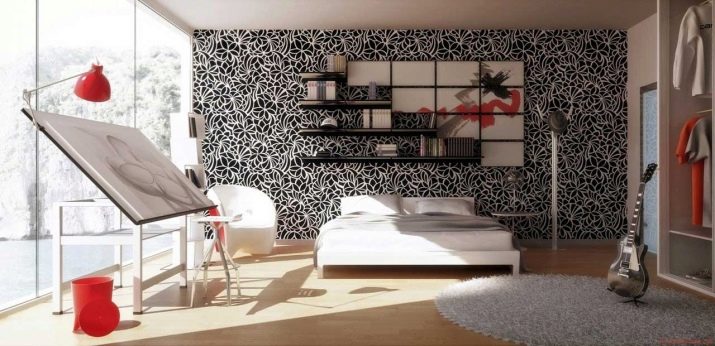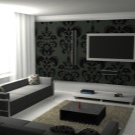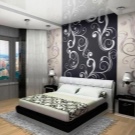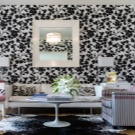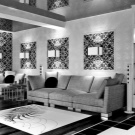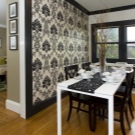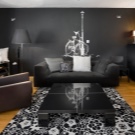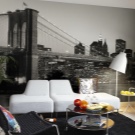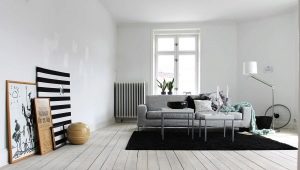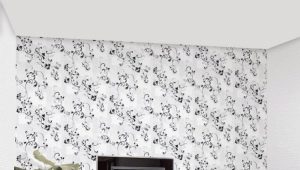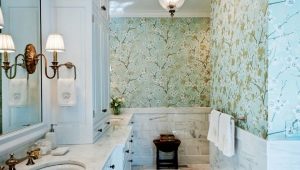Wallpaper glue: which one to choose?
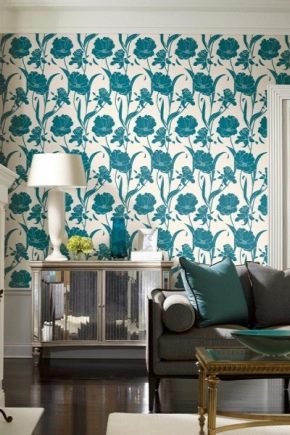
Wallpapering is probably the most popular type of finishing of living spaces, which is explained by the ability to quickly update the interior without sacrificing the budget.
The quality of gluing the wall covering depends not only on compliance with the technology of preparation of the working surface, but also on wallpaper glue.
Therefore, his choice can not be allowed to flow. Acquisition of the first available product may lead to loss of quality repairs. We will find out the main criteria for choosing wallpaper glue and what to look for when buying it to avoid disappointment.
Special features
In the manufacture of adhesive mixtures, the general formula is used, consisting of:
- 50-95% of the basein which cellulose derivatives are used: MC (methylcellulose), CMC (carboxyl methyl cellulose) and HPA / KMK - hydroxypropyl starch / carbomethyl starch - these substances belong to the group of modified starches.
- 45-50% polyvinyl acetate (PVA). By adding polymer vinyl acetate increases moisture resistance and adhesive ability of the adhesive mass.
- At 1.9-3.4% of fungicides with antiseptic. Bactericidal additives protect the surface of the walls from mold fungi and domestic parasites.
The difference between the adhesive mixtures lies in the packaging. Dry adhesives are sold in packs, and thick concentrates are sold in buckets of various sizes.
Adhesives have a different percentage of the base components, which is determined by the specific use:
- As part of universal adhesives for all types of coatings, the amount of base from MC reaches 97%. They are available with or without antifungal supplements.
- Special adhesives for heavy types of coatings consist of 75% base, 25% or more of PVA and contain 0-3% antiseptic additives.
- In adhesives for decoration with glass-based wallpaper and textile-based cloths, an approximately equal amount of base and PVA, and the proportion of fungicides with a bactericide is up to 3.4%.
Types and specifications
All wallpaper adhesives differ in purpose, and therefore they can be classified into three large categories:
- Highly specialized formulations for simplex and duplex paper coatings.
- Fixers marked “Universal”, adapted for decoration with all types of wall coverings.
- Special fixers for working with certain types of wallpaper materials: light, medium density, heavy.
Consider the various types of adhesive products:
Universal PVA
The popularity of the vinyl acetate polymer emulsion is due to the versatility of its application in various fields, including repair and finishing works.
Household PVA is used for gluing coatings based on vinyl and paper.
The emulsion has excellent performance:
- Excellent adhesive ability.
- Moisture resistant.
- Fireproof.
- High frost resistance.
- Ability to increase adhesion when added to primers and putty mixtures.
Due to the absence of toxic compounds in the composition of this product is considered environmentally friendly and safe. Low price makes it available to a wide range of buyers.Primers based on PVA with antifungal properties prevent the attack of mold fungi, protecting the walls from being affected by black mold.
Bustilat
Clay Bustilat and its varieties with improved properties are indispensable during repair. The basic components of the composition - latex, chalk, KMK, water and additives to give a mixture of optimal working qualities. In accordance with GOST, any brand of Bustilat does not contain harmful compounds and is environmentally friendly.
Technological properties:
- The working solution has a grayish or white color, when curing acquires transparency.
- Eliminates the formation of yellowness on the canvases, regardless of their thickness.
- Moistureproof.
- Differs in an economic expense - to 200 g / m2.
- Full drying time is up to one and a half days.
- Good mobility, which is convenient when adjusting the position of the paintings.
- Fireproof.
CMC drilling glue
Popular products for decorating paper wallpaper - CMC / CMC-H. These are powdery mixes of a pinkish shade with carboxymethylcellulose.
Pros:
- Eco-friendly.
- Prevent the development and spread of mold fungi.
- Do not smell.
- Eliminate yellowing coatings of light shades.
- Have a good exit.
- Cost cheaper glue with MC.
Vinyl glue
Adhesive mixtures for working with vinyl are produced with two types of base: expensive methylcellulose and cheaper modified KMK / GPC starches.
All major performance indicators of adhesive blends with methylcellulose deserve the highest marks.
Such compounds have:
- Excellent adhesion properties.
- Long term fixing.
- High penetrating power.
- Excellent compatibility with cement, as well as surfaces treated with lime.
- Reusable recoverable hitch.
- Perfect hygiene, which allows them to be used even in small children’s rooms.
- Perfect frost resistance.
Non-woven glue
It has a powdery consistency and is packaged in small boxes. This material is recommended to perform only non-woven lining with a smooth substrate, and with a different decorative layer - corrugated, laminated, vinyl, in the form of silk-screen printing.
For fiberglass and fabric coatings
These are concentrated ready-made dispersion compositions intended for lining with the heaviest textile fabrics. They have increased mechanical strength of the adhesive layer, the ability to resist moisture, the rate of film formation during the day.
Auxiliary means
When working with wall coverings it is often necessary to use:
- Docking glue. This material glue the edges of the canvas, and restore the seams in the areas of gaps. It is a quick-drying white compound that, when dried, becomes transparent and becomes invisible. It is designed to work with all types of coatings.
- Acrylic Curb Adhesive for fixing decorative tapes to surfaces from any material. It has an increased grasping ability and provides a perfect glide of the decorative element when fitting. Convenient packaging makes it easy to apply.
Technological indicators
When choosing wallpaper glue, you will need to evaluate the following technological properties:
- Primary adhesion - coupling with the base, which depends on the viscosity of the mixture.
- The final adhesion determined by the strength of adhesion of the web to the base after the adhesive layer is completely dry.
- PH value. Mixtures with acidity in the range of 6-7, which indicates a normal acid-base balance, exclude the formation of yellowness on the coatings of a light shade.
- Mobility, which is important for adjusting the position of the sheets on the working surface when joining and fitting according to the drawing.
- Indicator of hygiene due to the volume of antifungal additives in the adhesive mass.
- Ecological safety.
Compositions with a minimum of artificial additives and the absence of characteristic smells of synthetics are considered more harmless.
- Moisture resistance, which is determined by the ability of the adhesive layer to maintain strength in conditions of high humidity conditions.
- Compatibility, which is expressed in the reaction of the adhesive mixture when interacting with various materials: plaster, particleboard, wood, concrete and brick surface.
- The recoverability of the hitch with reusable softening / drying of the adhesive layer due to contact with the liquid.
- The long-term connection of the canvases with the base, that is, how long the glued surfaces will remain immaculate.
- The expenditure of the product is the ratio of the dissolved adhesive mixture to the amount of the working solution with the desired viscosity when using the packaging of the dry composition.
For which wallpaper?
Wallpaper products offered by construction stores are represented by various types of coatings, differing in material of manufacture:
- Paper. This is a tapestry of different density with a single-layer and two-layer structure. Compared with simplex wallpaper, duplex coatings have higher light resistance and moisture resistance. Classic canvas of paper have the lightest weight and small thickness, which eliminates the problems with the choice of adhesive composition. You can use the paste, drilling glue class CMC, the usual PVA.
- Made from vinyl. Vinyl coatings are characterized by durability, reliability, moisture resistance. They can be plain and embossed. Hot stamping is used in the production of compact vinyl, heavy vinyl, silk-screen printing and inhibited wallpaper with chemical embossing.
The technology of sticking vinyl wallpaper is no different from sticking paper coatings. The diluted mixture is applied to the canvas and used to process the wall, the wallpaper is kept for about 20 minutes and glued. Poor air permeability of vinyl significantly reduces the rate of drying of the adhesive layer. Therefore, home-made pastes use unprofitable, in contrast to the special glue, which dries much faster. As for the universal glue, then if it is used, a working solution of maximum concentration is needed.
- On a fibrous basis. Cellulose fiber is used to manufacture non-woven (non-woven) coatings. These are waterproof coatings that have good breathability. Flizelin - an excellent basis for painting. Here you need a special glue for nonwoven.
It differs from other compositions using technology: the finished product is applied exclusively on the work surface, and the sheets themselves are not necessary to coat and maintain for some time (like paper analogues), too.
- For textile coatings and glass fiber. Elite fabric coatings have a multi-layer structure, where different types of fabrics are used as a decorative layer, and the substrate is paper.This group of products includes glass fabric materials in which the base is covered with special yarn. To get the filament used molten glass. Such tapestries are glued with high-strength dispersion adhesives in the form of ready-made mortar or dry mixtures for decoration with glass fiber wallpaper.
- For ceiling photo wallpaper. The basis of such canvases are flizelin, paper, fabrics, PVC. The glue is selected depending on the type of wallpaper: coatings with a 3D effect, washable textiles, washable paper or in the form of a panel of polyvinyl chloride. For the first three types, it is recommended to use adhesives with indicators, depending on the material used to make the base, and to glue PVC sheets onto liquid nails. Adhesive components have already been added to self-adhesive photo wallpapers.
- From natural materials. Natural wallpaper are vegetable with a high content of cellulose fibers, cork with a paper base, bamboo with a fabric backing and veneer with non-woven or paper backing. Glue for them need only a special, high viscosity marked "for cork", "for bamboo and cork", and also suitable glue "Special-vinyl".
- Monochrome wallpaper. Before sticking white wallpaper and black coatings, carefully prepare the work surface. It is equally important to choose a glue that does not turn yellow when drying, considering the material used to make the wallpaper.
- Liquid. Wall-paper also happens liquid in the form of the powder intended for cultivation in water, with the subsequent drawing on the made out surface. This type of coating does not require the use of glue.
Where can I use?
Many wallpaper adhesives containing polyvinyl acetate are suitable for use as a primer, making it possible to save on the purchase of a primer. About this feature, manufacturers write on the pack. Adhesive mixtures for heavy and dense wallpaper are good for gluing the substrate under the finish coat.
Universal PVA can glue twisted rope - a decorative cord for masking the joint of the wall with the ceiling structure, plastic corners and borders.
Bustilat is suitable for gluing joints and gluing seams, as it becomes transparent when it dries.
How to cook?
An adhesive mixture can be made with your own hands at home. Wheat flour or starch is used as a base paste.To calculate the required volume of glue, they are repelled by the fact that a liter of paste is enough for sticking 2-3 rolls.
Procedure:
- Boil water.
- Take a large bowl, given the required volume of the product.
- Pour 150 g of flour into the container, add water and mix thoroughly. Dilute to the consistency of sour cream of medium thickness.
- Slowly pour the diluted mixture into a pot of boiling water, stirring continuously.
- Allow the mixture to boil, then leave to cool.
The finished paste should be lump free and be a homogeneous mass. By acting in the same way, paper starch glue can be applied with the addition of dry wood glue to improve tackiness. Divorced adhesives should not be stored for more than 24 hours. Overdue product loses its adhesiveness.
You can also make your own PVA at home from gelatin, glycerin, flour, ethyl alcohol. Gelatin (5 g) is allowed to swell in water (1 l) during the day. Then it is mixed with flour and placed in a water bath. At the end add 4 g of glycerin and 20 ml of alcohol.
How to make a paste paste with your own hands, see the next video.
How much to store?
When choosing an adhesive mixture, you need to consider how long the diluted glue can be stored. If it is powdered adhesives, then this indicator is influenced by the raw material base - MC / CMC / KMK / GIC. Usually, adhesives with such bases in liquid form can stand a maximum of 10 days. The storage time of any finished glue depends on the presence of preservatives in the composition and their quality. The more preservatives, the longer the product does not dry.
Manufacturers
A huge selection of wallpaper glues of domestic and imported brands allows you to choose a mixture for stickers of any type of wall covering. Let's find out which of the options is better to choose for cloths from different materials.
Leading positions in the market of adhesive products are:
- French stamps: Quelyd, Semin Sem Murale, Bostik, Axton by Leroy Merlin.
Each of these brands is well known to the Russian buyer for a solid range of high-quality products for gluing a wide variety of coatings.
- German stamps: “Moment”, Metylan, “Econ”, representing all types of adhesives, Knauf (for non-woven).
- Russian brands: Quality, which produces all varieties of adhesive mixtures from universal to special, Oscar and Decoro are professional compounds for glass walling and heavy coatings.Lacra, Titan with indicator for non-woven, vinyl and universal coatings.
- Exclusive (England) - high-quality mixtures with high adhesion and water resistance for decoration vinyl, metallized, velor wallpapers.
- Amil (Ukraine) for heavy coatings of non-woven, vinyl, textile.
- ACM (Italy) - universal and specialized adhesive compositions are distinguished by a low content of volatile compounds.
- Adhesives "CMC class chips" from different manufacturers - high demand for these compounds is due to low cost, low fuel consumption and environmental safety.
Judging by the reviews, among foreign brands, “Moment” adhesives enjoy the special love of buyers. Under this brand a huge number of high-quality types of adhesive blends are produced and, most importantly, affordable. Of the expensive products are popular mixtures Exclusive, the cost of which compensates for excellent working qualities.
Of the Russian brands, users prefer the repeatedly proven quality of adhesive products, Quality, and the relatively young Titan brand. According to finishers, Titan products live up to their name and perfectly hold heavy surfaces.
The reinforced formula of the composition excludes peeling of the canvases even in particularly difficult areas - in the places of the docking of the canvases, next to the radiators.
Examples of the use of wallpaper in the interior
Wallpaper glue plays one of the leading roles in the finishing of living spaces. We suggest this by examples:
Decorating the premises with natural wallpaper made of cork, jute, reed, bamboo is expensive, although the end result is worth the money spent. Creating an exclusive interior is impossible without good glue.
Wallpaper for painting - another popular type of interior. This is a great way to diversify the design of the room, refreshing or changing the color of the walls. It requires waterproof glue.
The use of fabric wall coverings allows you to become the owner of an expressive and memorable interior in various styles. The key to successful implementation of such design will be the presence of a special adhesive.
Making photo wallpapers with a 3D effect is a great way to personalize living space. High-quality glue will provide a perfect and reliable fit of the coating to the surface.
Finishing surfaces with black and white coatings is a current trend in the world of interior design. In this case, you can not do without glue, precluding the formation of ugly yellow spots.
